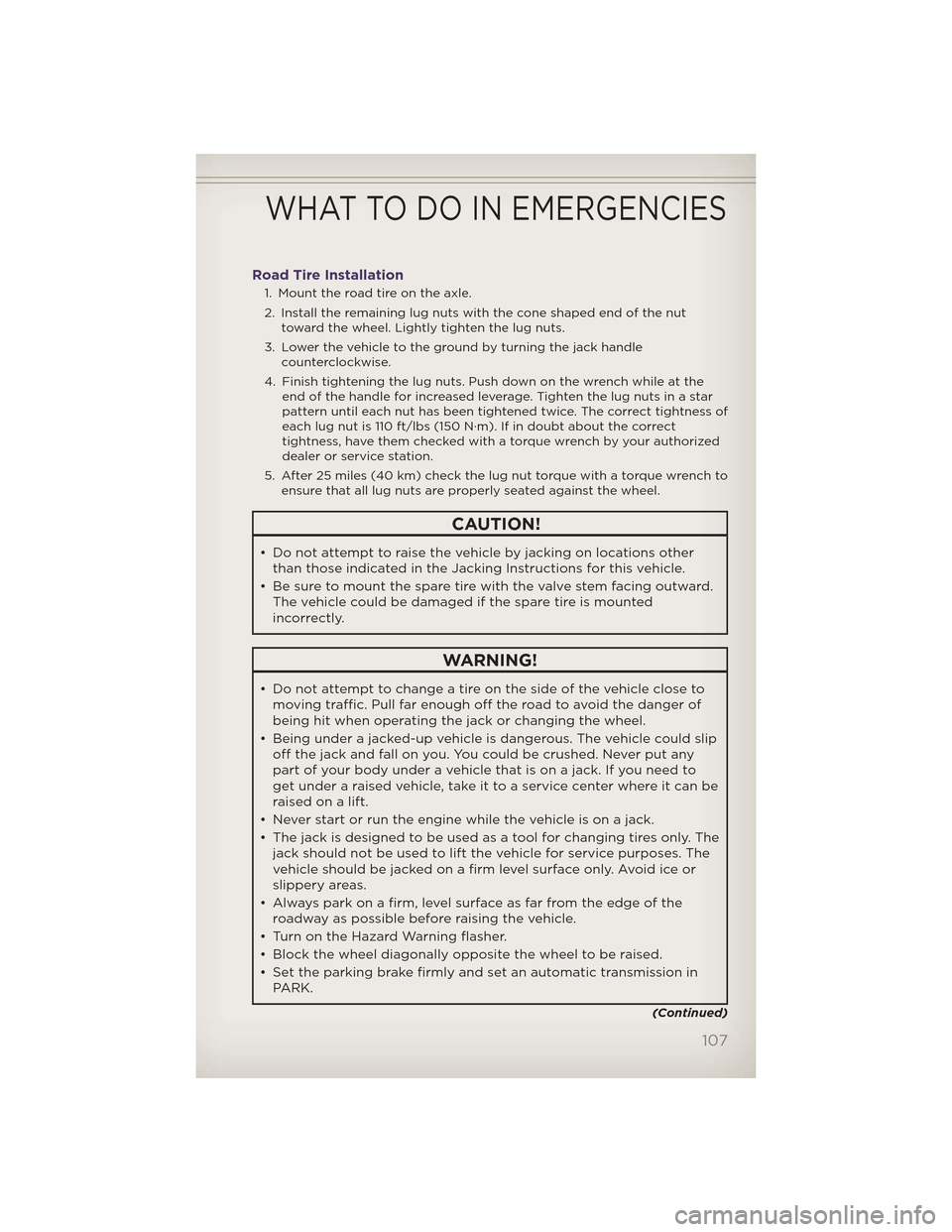Page 86 of 148

QUADRA-TRAC I® FOUR-WHEEL DRIVE
Quadra-Trac I® Operating Instructions/Precautions - 3.6L Only
• The Quadra-Trac I® is a single-speed (HI range only) transfer case, whichprovides convenient full-time four-wheel drive. No driver interaction is
required. The Brake Traction Control (BTC) System, which combines
standard ABS and Traction Control, provides resistance to any wheel that
is slipping to allow additional torque transfer to wheels with traction.
QUADRA-TRAC II®/QUADRA-DRIVE II®
FOUR-WHEEL DRIVE
Quadra-Trac II®/Quadra-Drive II® Operating Instructions/
Precautions
• The Quadra-Trac II®/Quadra-DriveII® transfer case is fully automatic
in the normal driving 4WD HI
mode. The Quadra-Trac
II®/Quadra-Drive II® transfer case
provides three mode positions:
• 4WD HI
• NEUTRAL
• 4WD LOW
• This transfer case is fully automatic in the 4WD HI mode.
• When additional traction is required, the 4WD LOW position can be used to lock the front and rear driveshafts together and force the front and
rear wheels to rotate at the same speed. The 4WD LOW position is
intended for loose, slippery surfaces only. Driving in the 4WD LOW
position on dry, hard-surfaced roads may cause increased tire wear and
damage to driveline components.
• When operating your vehicle in 4WD LOW, the engine speed is approximately three times that of the 4WD HI position at a given road
speed. Take care not to overspeed the engine and do not exceed 25 mph
(40 km/h).
NOTE:
• If shift conditions/interlocks are not met, or a transfer case motor temperature protection condition exists, a “For 4x4 Low Slow Below
5 MPH or 8 KPH Put Trans in N Press 4 Low” message will flash from the
Electronic Vehicle Information Center (EVIC).
OFF-ROAD CAPABILITIES
84
Page 108 of 148

6. Raise the vehicle by turning thejack screw clockwise. Raise the
vehicle only until the tire just
clears the surface and enough
clearance is obtained to install
the spare tire. Minimum tire lift
provides maximum stability.
7. Remove the lug nuts and wheel.
8. Position the spare wheel/tire on the vehicle and install the lug
nuts with the cone-shaped end
toward the wheel. Lightly tighten
the nuts.
9. Lower the vehicle by turning the jack screw counterclockwise, and
remove the jack and wheel
blocks.
10. Finish tightening the lug nuts. Push down on the wrench while
at the end of the handle for
increased leverage. Tighten the
lug nuts in a star pattern until
each nut has been tightened
twice. The correct wheel nut
tightness is 110 ft lbs (150 N·m).
If in doubt about the correct
tightness, have them checked
with a torque wrench by your
authorized dealer or at a service
station.
11. Lower the jack to the fully closed position and return it and the tools to the proper positions in the foam tray.
12. Remove the small center cap and securely store the road wheel in the cargo area.
13. Have the aluminum road wheeland tire repaired as soon as
possible, properly secure the
spare tire with the special wing
nut torqued to 3.7 ft-lbs (5 N·m),
reinstall the jack and tool kit
foam tray, and latch the rear load
floor cover.
WHAT TO DO IN EMERGENCIES
106
Page 109 of 148

Road Tire Installation
1. Mount the road tire on the axle.
2. Install the remaining lug nuts with the cone shaped end of the nuttoward the wheel. Lightly tighten the lug nuts.
3. Lower the vehicle to the ground by turning the jack handle counterclockwise.
4. Finish tightening the lug nuts. Push down on the wrench while at the end of the handle for increased leverage. Tighten the lug nuts in a star
pattern until each nut has been tightened twice. The correct tightness of
each lug nut is 110 ft/lbs (150 N·m). If in doubt about the correct
tightness, have them checked with a torque wrench by your authorized
dealer or service station.
5. After 25 miles (40 km) check the lug nut torque with a torque wrench to ensure that all lug nuts are properly seated against the wheel.
CAUTION!
• Do not attempt to raise the vehicle by jacking on locations otherthan those indicated in the Jacking Instructions for this vehicle.
• Be sure to mount the spare tire with the valve stem facing outward. The vehicle could be damaged if the spare tire is mounted
incorrectly.
WARNING!
• Do not attempt to change a tire on the side of the vehicle close tomoving traffic. Pull far enough off the road to avoid the danger of
being hit when operating the jack or changing the wheel.
• Being under a jacked-up vehicle is dangerous. The vehicle could slip off the jack and fall on you. You could be crushed. Never put any
part of your body under a vehicle that is on a jack. If you need to
get under a raised vehicle, take it to a service center where it can be
raised on a lift.
• Never start or run the engine while the vehicle is on a jack.
• The jack is designed to be used as a tool for changing tires only. The jack should not be used to lift the vehicle for service purposes. The
vehicle should be jacked on a firm level surface only. Avoid ice or
slippery areas.
• Always park on a firm, level surface as far from the edge of the
roadway as possible before raising the vehicle.
• Turn on the Hazard Warning flasher.
• Block the wheel diagonally opposite the wheel to be raised.
• Set the parking brake firmly and set an automatic transmission in PARK.
(Continued)
WHAT TO DO IN EMERGENCIES
107